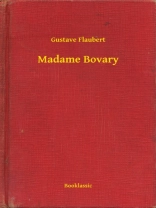Die Hauptperson des Romans ist Emma, die nach dem Tod der Mutter allein mit ihrem Vater auf dessen Hof lebt. Sie heiratet den Landarzt Charles Bovary, der die schöne Frau verehrt. Sie verspricht sich von der Heirat ein gesellschaftlich aufregenderes Leben, ist dann aber rasch von dem Dorfalltag und ihrem eher einfach strukturierten Mann gelangweilt. Die Sorge um ihren sich verschlechternden Gesundheitszustand und ihre Klagen über ihren Wohnort veranlassen Charles, in eine andere Ortschaft umzuziehen, er geht davon aus, dass seiner Frau eine Luftveränderung gut täte. In Yonville angekommen, freunden sich beide schnell mit dem Apotheker Homais und dessen Familie an. In Homais’ Haus lebt auch der Kanzlist Léon, mit dem Emma eine Art Seelenverwandtschaft, begründet in ihrer beider Interesse für Literatur und Musik, verbindet.
Gustave Flaubert
Madame Bovary [EPUB ebook]
Madame Bovary [EPUB ebook]
Buy this ebook and get 1 more FREE!
Language German ● Format EPUB ● Pages 229 ● ISBN 9789635263165 ● File size 0.7 MB ● Publisher Booklassic ● Country US ● Published 2015 ● Downloadable 24 months ● Currency EUR ● ID 4540995 ● Copy protection without












